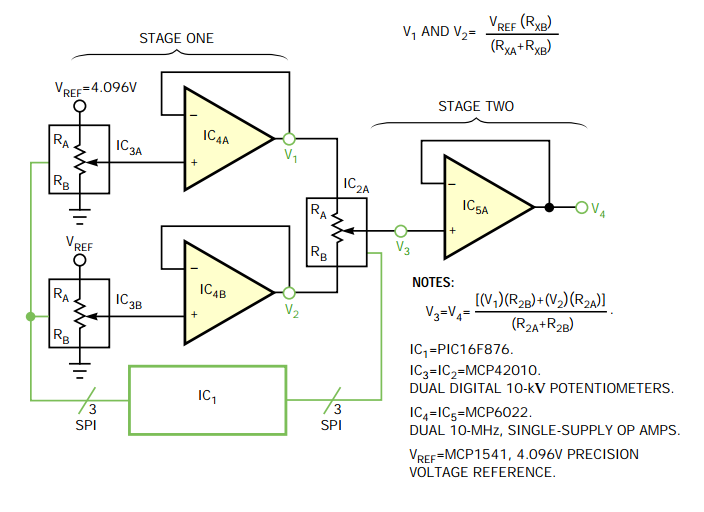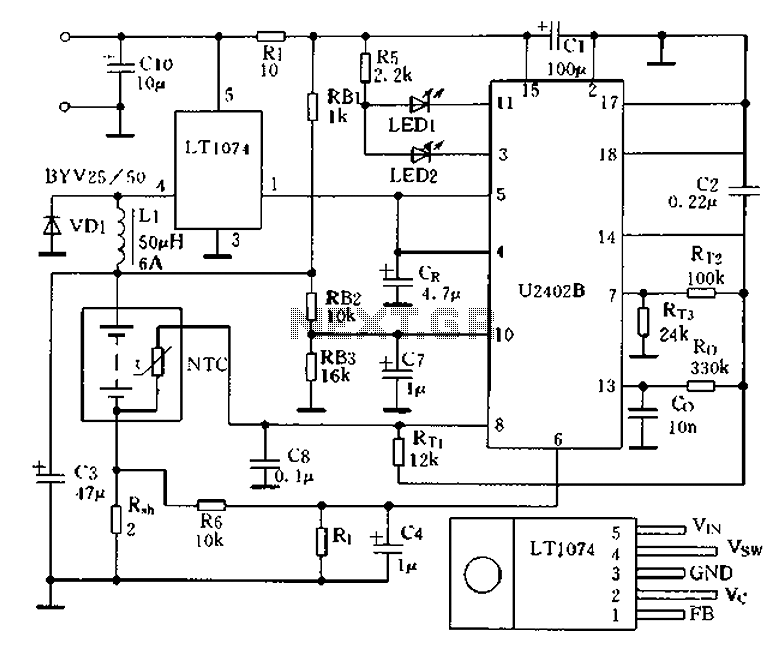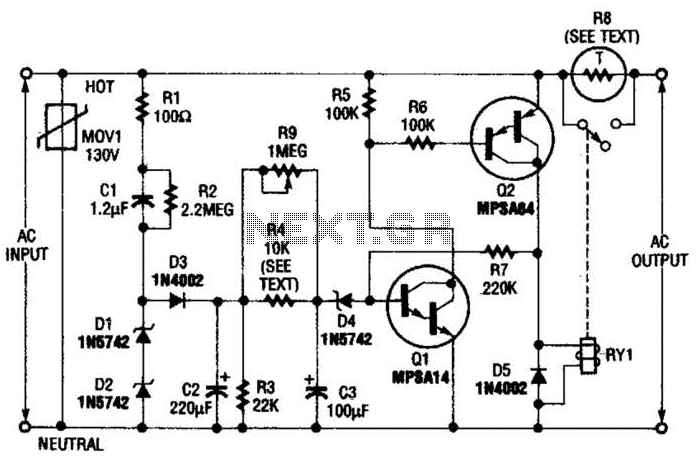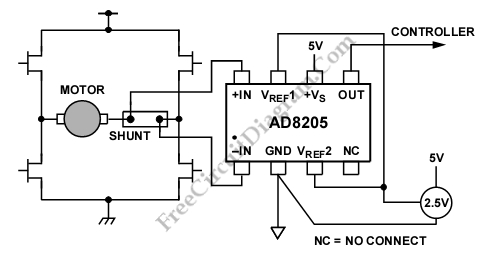
Power Buffer Boosts Reference Current
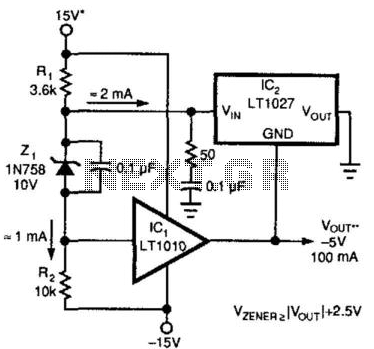
A method for enhancing the output current of a reference while also providing overload protection is illustrated. In this configuration, IC1 functions as a power buffer. The LT1027 regulates the output voltage (Vout) and ground to maintain a stable 5 V. The RC damper, consisting of a 50-ohm resistor and a 0.1 µF capacitor, ensures loop stability. It is important to note that the output may oscillate if low ESR capacitors are used; therefore, aluminum electrolytic or tantalum capacitors are recommended over ceramic or mylar types.
The described circuit employs an LT1027 integrated circuit (IC) to serve as a power buffer, which is essential for increasing the output current capability of a voltage reference. The role of the LT1027 is to maintain a stable 5 V output while isolating the load from the voltage reference source. This configuration is particularly beneficial in applications where the load may vary significantly, as it allows the reference voltage to remain unaffected by changes in the load current.
The RC damper, composed of a 50-ohm resistor and a 0.1 µF capacitor, is critical for ensuring the stability of the feedback loop. This damper mitigates potential oscillations that could arise due to feedback instabilities, particularly when driving capacitive loads. Oscillation can occur when using low equivalent series resistance (ESR) capacitors, which are common in ceramic and mylar types. To prevent such issues, the circuit design recommends the use of aluminum electrolytic or tantalum capacitors, which typically exhibit higher ESR values and thus contribute to improved stability in this application.
In summary, the circuit effectively enhances the output current capability of a reference voltage while ensuring reliability through overload protection and stability measures. Proper component selection, particularly regarding capacitors, is crucial for maintaining the desired performance and preventing oscillation. A method of boosting the output current of a reference and also protecting against overloads is shown in Fig. 66-5. IC1 acts as a power buffer. The LT1027 forces the output of V0ut and ground to be 5 V. The RC damper (50 and 0.1 ¥) provides loop stability. The output might oscillate if low ESR capacitors are connected to it, so use aluminum electrolytic or tantalum capacitors instead of ceramic or mylar.
The described circuit employs an LT1027 integrated circuit (IC) to serve as a power buffer, which is essential for increasing the output current capability of a voltage reference. The role of the LT1027 is to maintain a stable 5 V output while isolating the load from the voltage reference source. This configuration is particularly beneficial in applications where the load may vary significantly, as it allows the reference voltage to remain unaffected by changes in the load current.
The RC damper, composed of a 50-ohm resistor and a 0.1 µF capacitor, is critical for ensuring the stability of the feedback loop. This damper mitigates potential oscillations that could arise due to feedback instabilities, particularly when driving capacitive loads. Oscillation can occur when using low equivalent series resistance (ESR) capacitors, which are common in ceramic and mylar types. To prevent such issues, the circuit design recommends the use of aluminum electrolytic or tantalum capacitors, which typically exhibit higher ESR values and thus contribute to improved stability in this application.
In summary, the circuit effectively enhances the output current capability of a reference voltage while ensuring reliability through overload protection and stability measures. Proper component selection, particularly regarding capacitors, is crucial for maintaining the desired performance and preventing oscillation. A method of boosting the output current of a reference and also protecting against overloads is shown in Fig. 66-5. IC1 acts as a power buffer. The LT1027 forces the output of V0ut and ground to be 5 V. The RC damper (50 and 0.1 ¥) provides loop stability. The output might oscillate if low ESR capacitors are connected to it, so use aluminum electrolytic or tantalum capacitors instead of ceramic or mylar.
